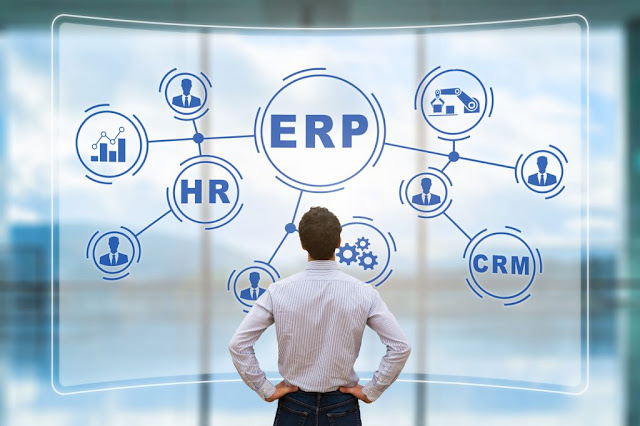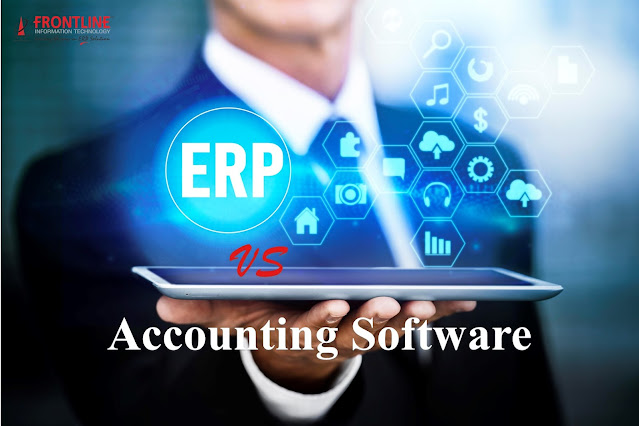8 ways to get the most out of your ERP system
Implementing an ERP system is an expensive
proposition that can cost millions of dollars (with the software licenses,
consulting fees, integration c
So, what
steps can you take when choosing or deploying an ERP solution to decrease the
likelihood of failure? Here are eight suggestions from ERP experts, systems
integrators and project managers who have successfully implemented an ERP
software system.
1. Choose an ERP solution
that best suits your business’s needs (and industry requirements)
“Because it’s a major investment of time and money,
be sure to create a comprehensive list of requirements with input from multiple
key stakeholders.
“Define your company’s core needs,”. Your system
requirements should be a short list of functional and operational must-haves
and an equally short list of key strategic requirements that will support your
future growth. A well-defined list of requirements will result in a more
seamless implementation process and an ERP system with lower total cost of
ownership.”
“Seriously
consider how [the system] would fit into your current IT infrastructure,” And
“ensure that [the] ERP [you select] can support the regulatory requirements of
your business – [and if] you will have to pay big dollars for customizations.
Make your choice not solely upon price or vendor alone.”
2. Look at total cost of
ownership (TCO)
“My best advice to a cost-conscious [organization]
deciding on an ERP system is to really look at total cost of ownership,” “Yes,
the software itself costs money, but as you compare costs for different
solutions don’t forget about hardware, consulting dollars to implement,
internal resources to maintain the software and future upgrade costs that come
with it. But then when it comes to Horizon EBS Solution, we do not charge for
the upgrades for our clients unless and until it is a change of version. I know
a company that doubled the size of its IT department to maintain an ERP
solution that initially looked like a bargain.”
3. Vet vendors/integration
partners carefully.
“Choosing the right vendor is a major part of the
process,”. “The vendor like Frontline IT has done their homework and can get
the job done to your specifications. Be sure they’re prepared to give specific
estimates regarding TCO and the ROI you can expect for your business and in
what period of time,”. “Discuss in detail the budget and project completion
time and require references from other organizations that have hired them. Also
be certain they have the proper experience serving your specific industry.”
“When embarking on an ERP
implementation, it’s essential for your software and service provider to know
your business,”. “Every industry has its own requirements, from
terminology to specific functionality. A one-size-fits-all ERP will leave you
with many gaps and needed customizations,”. “Whether you are in a specialized
vertical such as footwear or are a well-known Facilities Management firm,
ensure your vendor is an industry expert.”
We at Horizon EBS are does
not lie in a list of one-size-fits ERP Provider. We understand the business
process and accordingly we mould our product to fill those gaps which suits
your requirement.
4. Make sure senior
management is on board
“One key predictor of how your ERP implementation
will go is upper management buy-in.” “Senior management [doesn’t have] to be
integrally involved in every step of the implementation process. However,
management involvement and backing in prioritizing the project, setting
direction, allocating resources and facilitating communication can be the
single most important success factor in any implementation process.”
“It’s imperative the team tasked with choosing a new
ERP system collaborate with senior leadership team or a member of the C-suite,
where one individual from [the] executive team can serve as the sponsor and
internal champion of the project to streamline approvals and break down
internal silos.”
5. Develop a roadmap
“A roadmap not only ensures a smooth process, but it
shows financial stakeholders when the implementation will start, the cost and
when they can expect to start seeing benefits,” “Roadmaps help manage large,
complex technology and business process transformations in a series of
well-defined phases, and help take control of cost planning. [Use the] roadmap
[to] phase deployment over a period of shorter go lives, spreading out the cost
over years.”
“It is critical to establish a well-defined footprint
for your ERP implementation,”. “Define the functional areas of your
organization that will be both affected and unaffected by the ERP system. For
the affected areas of the organization, detail the ERP functionality that will
be deployed and the business case for expected improvements,”. “Once this is
complete, it is critical to exercise strong control over the scope of the
project. Changing the scope of an ERP system should be a difficult process.”
“Putting together a detailed roadmap that outlines
what steps the business needs to take before transitioning to the new system
will help pinpoint potential ramifications and identify ways in which to
mitigate those speedbumps from the get go,”.
6. Establish a
cross-functional team to oversee implementation
To help smooth the implementation process, companies
should set up an interdepartmental implementation team. “This team should be
made up of individuals [from different departments,] such as accounting,
operations, information technology, payroll, human resources, purchasing,
service and inventory,”. “The team needs decision-making authority and a clear
escalation path when facing decisions beyond their authority.”
“By building a cross-functional team, companies not
only improve the likelihood that all areas of the business are addressed, but
also help create buy-in that can drive the overall project’s success,”. “All
cross-functional teams should include certain key organizational functions such
as project management, IT and executive management.”
7. Deploy the ERP one module
at a time (not all at once)
“For example, implement your accounting applications
first, such as your general ledger, payables and receivables,” “Once those
modules are up and running, implement your other modules, such as HR and
payroll. Then implement your satellite modules and other add-ons. Many
organizations have failed [in] their ERP implementations by using the big bang
approach and attempting to convert all their systems to the ERP all at once – a
big, costly mistake.”
8. Don’t skimp on training
“The
most critical element of an ERP rollout is the people,”. “Create a full plan to
train and onboard stakeholders. Ensuring implementation resources remain
assigned for the first six weeks is essential to supporting end-users, managing
change requests and addressing points of failure. Appreciable support is the
most important factor for ensuring successful adoption of a new ERP system.”
“Make
a solid investment in training,”. “This is another key element to successful
ERP deployments and should not be overlooked. If employees are undertrained,
they will often fail to take full advantage of the tools they’ve been given,
and can become frustrated, abandoning the system and resorting to manual
workarounds that drain time and resources and create islands of information,”
Therefore, it’s important to create “a training program that is appropriate to
each user’s role within the company, with specific goals and outcomes defined.”
Frontline Information Technology is a major ERP company in ERP Software
development services and we design and give tailor-made solutions for any company coming in a small,
mid or large cap. We
develop customized solutions for industries to meet the flow and standards
practice by them in different segments.
If you are looking for a Custom
ERP solution for your
company, you can contact and
reach us. We are
ready to understand your needs and will give you best solution to meet up your
requirements.




Comments
Post a Comment